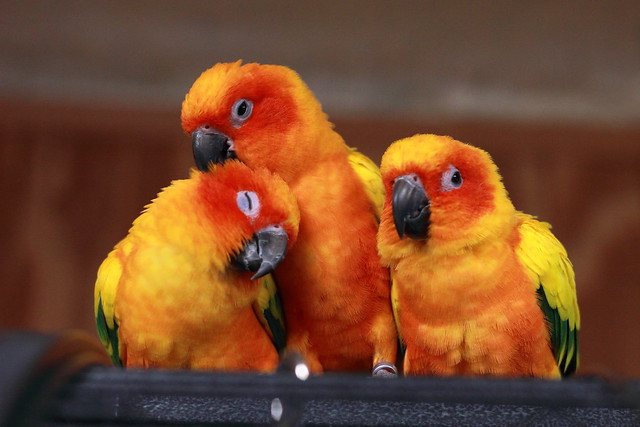 |
| Photo by Anna Panáková |
Recovery will be much quicker if a gaseous agent is used by the veterinarian, although an injectable anesthetic is equally safe. Inexperienced hands mortality is extremely low, although conures suffering from respiratory ailments of any kind may have a poor prognosis. Laparotomies can be useful for diagnostic purposes, being a reliable means of confirming the presence of the fungal disease aspergillosis within the body cavity, for example.
In many areas, veterinarians regularly conduct surgical sexing sessions, often in conjunction with local bird clubs. If you need to discover the sex of your conures, arrange an appointment for the procedure. Pay particular attention to instructions for both pre- and post-operative care. The incision is very small and heals rapidly, even when sutured.
You may be able to purchase a pair of conures that have already been sexed. They are likely to be accompanied by a certificate stating their sexes, and distinguishing features, signed by the veterinarian concerned. If you are in doubt, however, assuming the birds appear healthy, you can have the procedure repeated at a later date. The method is essentially reliable, but mistakes can occur occasionally, especially with young birds. There is also a risk that the birds may have gotten muddled afterward unless they were clearly marked. Some dealers mark birds of one sex by clipping a feather in a particular way, which serves to distinguish them until the next molt. For easy visual recognition, the tip of the tail can be cut in the case of hens for example, if it is not possible to keep the sexes apart.
Alternative Methods
Other noninvasive means of sexing have proven less reliable, although research is continuing in these areas. One option is fecal steroid analysis: the birds' droppings are tested for the relative levels of male and female hormones. This method, if perfected, will simply require a sample of droppings to determine a bird's sex. There will be no need to catch the bird or administer any drugs. Another promising method of laboratory sexing is chromosomal karyotyping, based on a small sample of blood. The chromosomes present within the nucleus of cells provide a means of distinguishing the sexes microscopically once the pair of sex chromosomes have been located. Those of the hen are of uneven length, comprising a long chromosome and a shorter member of the pair.

No comments:
Post a Comment